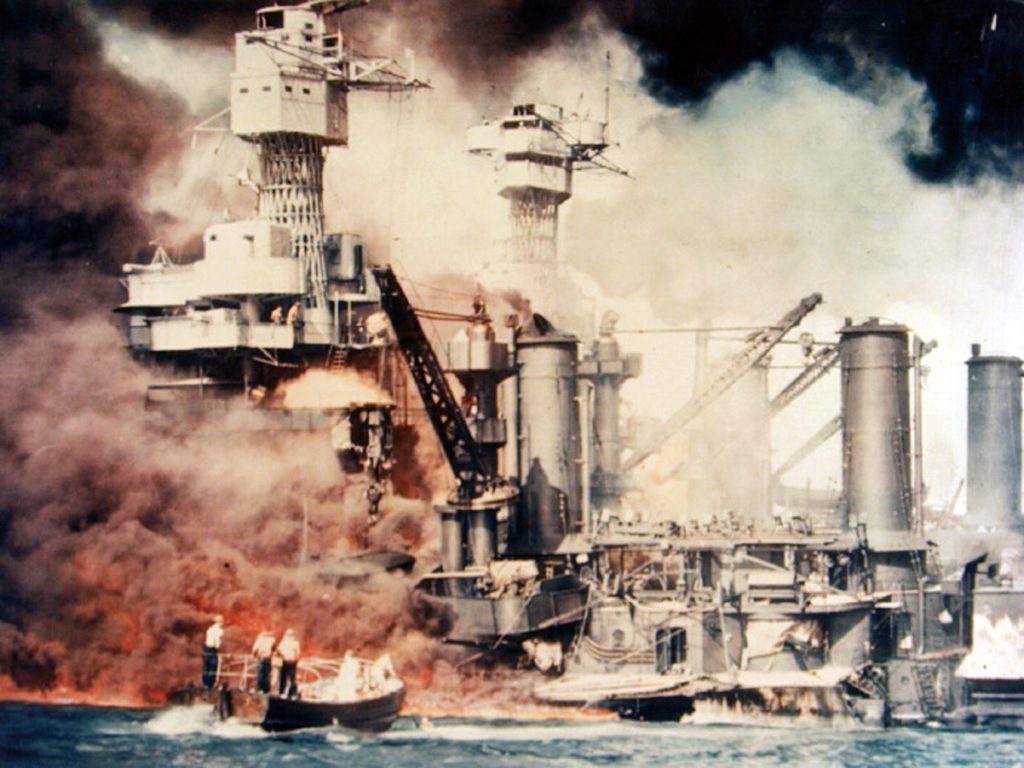The first week of December included two important Manhattan Project and World War II anniversaries. December 2nd was the 76th anniversary of Chicago Pile-1 (CP-1) going critical at the University of Chicago. The Metallurgical Laboratory or “Met Lab” at UChicago was one of the most important branches of the Manhattan Project. Its primary role was to design a nuclear reactor. The success of the CP-1 marked the world’s first self-sustained, controlled nuclear chain reaction.
CP-1 was designed by Enrico Fermi and his colleagues at the Chicago Met Lab. An Italian refugee physicist who came to New York City in late 1938, Fermi studied the fundamentals of fission and experimented with how to control a nuclear reaction at Columbia University. After joining the Met Lab in 1942, Fermi and his associates designed a production “pile” consisting of a lattice of graphite blocks and uranium slugs and built the pile under the west stands of Stagg Field. His goal was to produce a self-sustaining nuclear reaction, when the pile had a reproduction value (k) of one.
On the afternoon of December 2, 1942, CP-1 went critical. The continuous chain reaction was witnessed by Leo Szilard, Eugene Wigner, Leona Woods Marshall, and DuPont engineer Crawford Greenewalt along with dozens of others. Fermi’s basic design using a lattice of uranium slugs and graphite blocks would be expanded and built at Hanford as the B Reactor.
For more on Chicago Pile-1, the Met Lab, and their legacies for today, check out our “Ranger in Your Pocket” program on the University of Chicago.
December 7th marked the 77th anniversary of Japan’s surprise attack against the U.S. Pacific Fleet anchored at Pearl Harbor, HI on December 7, 1941. The strike killed 2,403 American civilians and military personnel and wounded 1,178 others. The next day, Congress declared war against Japan; a few days later, Nazi Germany and Italy declared war against the United States.
 Dorothy Wilkinson, who worked as a “Calutron girl” at the Y-12 Plant in Oak Ridge during the war, lost her brother on the USS Arizona. She recalled, “I joined the Manhattan Project when I graduated high school because I had a brother killed on the Arizona at Pearl Harbor, and I thought that I would like to do something for the war effort.”
Dorothy Wilkinson, who worked as a “Calutron girl” at the Y-12 Plant in Oak Ridge during the war, lost her brother on the USS Arizona. She recalled, “I joined the Manhattan Project when I graduated high school because I had a brother killed on the Arizona at Pearl Harbor, and I thought that I would like to do something for the war effort.”
Nick Salazar, who started working at the Los Alamos mess hall in 1945 and went on to a long career as a scientist and New Mexico state representative, was only twelve years old at the time of Pearl Harbor. “I remember being at my grandmother’s house. We were having lunch. I remember news coming on the radio that Japan had attacked Pearl Harbor, and we were at war. Of course, my grandmother and my mother and everybody started crying, only because my uncle was at that age of being able to be inducted into the service. He did, and unfortunately, he went through some real hard times. He came back very sick and eventually died. Those were very, very, very hard times.”
For photographs of the Pearl Harbor attack, see this album on AHF’s Facebook page. See our article Remembering Pearl Harbor for more reflections from Manhattan Project veterans.





![Chicago Pile-1 reunion, December 2, 1946. Photo courtesy of the University of Chicago Photographic Archive, [apf3-00232], Special Collections Research Center, University of Chicago Library.](https://ahf.nuclearmuseum.org/wp-content/uploads/2016/11/Met Lab CP-1 Group_0-scaled.jpg)